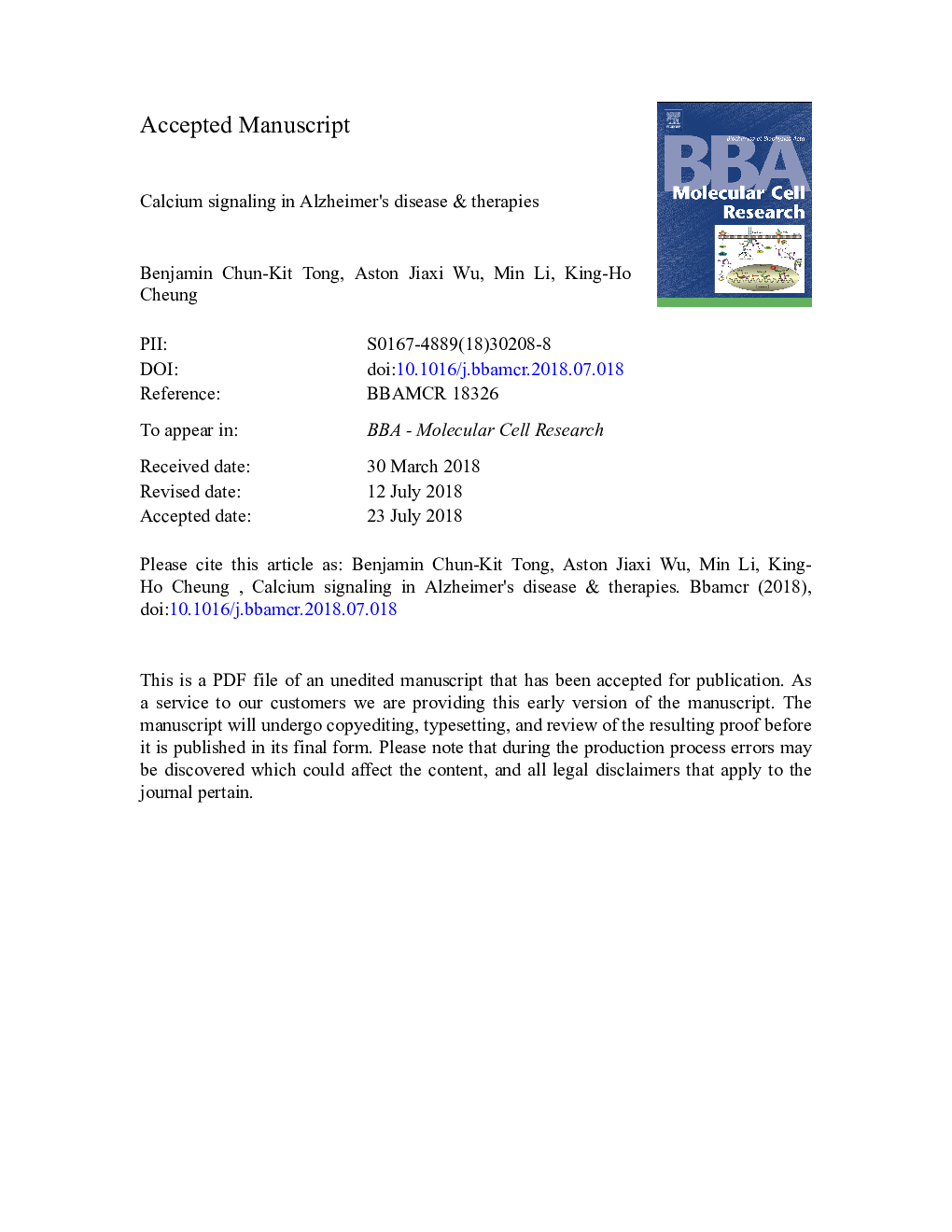| کد مقاله | کد نشریه | سال انتشار | مقاله انگلیسی | نسخه تمام متن |
|---|---|---|---|---|
| 10156743 | 1666424 | 2018 | 59 صفحه PDF | دانلود رایگان |
عنوان انگلیسی مقاله ISI
Calcium signaling in Alzheimer's disease & therapies
ترجمه فارسی عنوان
سیگنالینگ کلسیم در بیماری آلزایمر و درمان
دانلود مقاله + سفارش ترجمه
دانلود مقاله ISI انگلیسی
رایگان برای ایرانیان
کلمات کلیدی
موضوعات مرتبط
علوم زیستی و بیوفناوری
بیوشیمی، ژنتیک و زیست شناسی مولکولی
زیست شیمی
چکیده انگلیسی
Alzheimer's disease (AD) is the most common type of dementia and is characterized by the accumulation of amyloid (Aβ) plaques and neurofibrillary tangles in the brain. Much attention has been given to develop AD treatments based on the amyloid cascade hypothesis; however, none of these drugs had good efficacy at improving cognitive functions in AD patients suggesting that Aβ might not be the disease origin. Thus, there are urgent needs for the development of new therapies that target on the proximal cause of AD. Cellular calcium (Ca2+) signals regulate important facets of neuronal physiology. An increasing body of evidence suggests that age-related dysregulation of neuronal Ca2+ homeostasis may play a proximal role in the pathogenesis of AD as disrupted Ca2+ could induce synaptic deficits and promote the accumulation of Aβ plaques and neurofibrillary tangles. Given that Ca2+ disruption is ubiquitously involved in all AD pathologies, it is likely that using chemical agents or small molecules specific to Ca2+ channels or handling proteins on the plasma membrane and membranes of intracellular organelles to correct neuronal Ca2+ dysregulation could open up a new approach to AD prevention and treatment. This review summarizes current knowledge on the molecular mechanisms linking Ca2+ dysregulation with AD pathologies and discusses the possibility of correcting neuronal Ca2+ disruption as a therapeutic approach for AD.
ناشر
Database: Elsevier - ScienceDirect (ساینس دایرکت)
Journal: Biochimica et Biophysica Acta (BBA) - Molecular Cell Research - Volume 1865, Issue 11, Part B, November 2018, Pages 1745-1760
Journal: Biochimica et Biophysica Acta (BBA) - Molecular Cell Research - Volume 1865, Issue 11, Part B, November 2018, Pages 1745-1760
نویسندگان
Benjamin Chun-Kit Tong, Aston Jiaxi Wu, Min Li, King-Ho Cheung,
